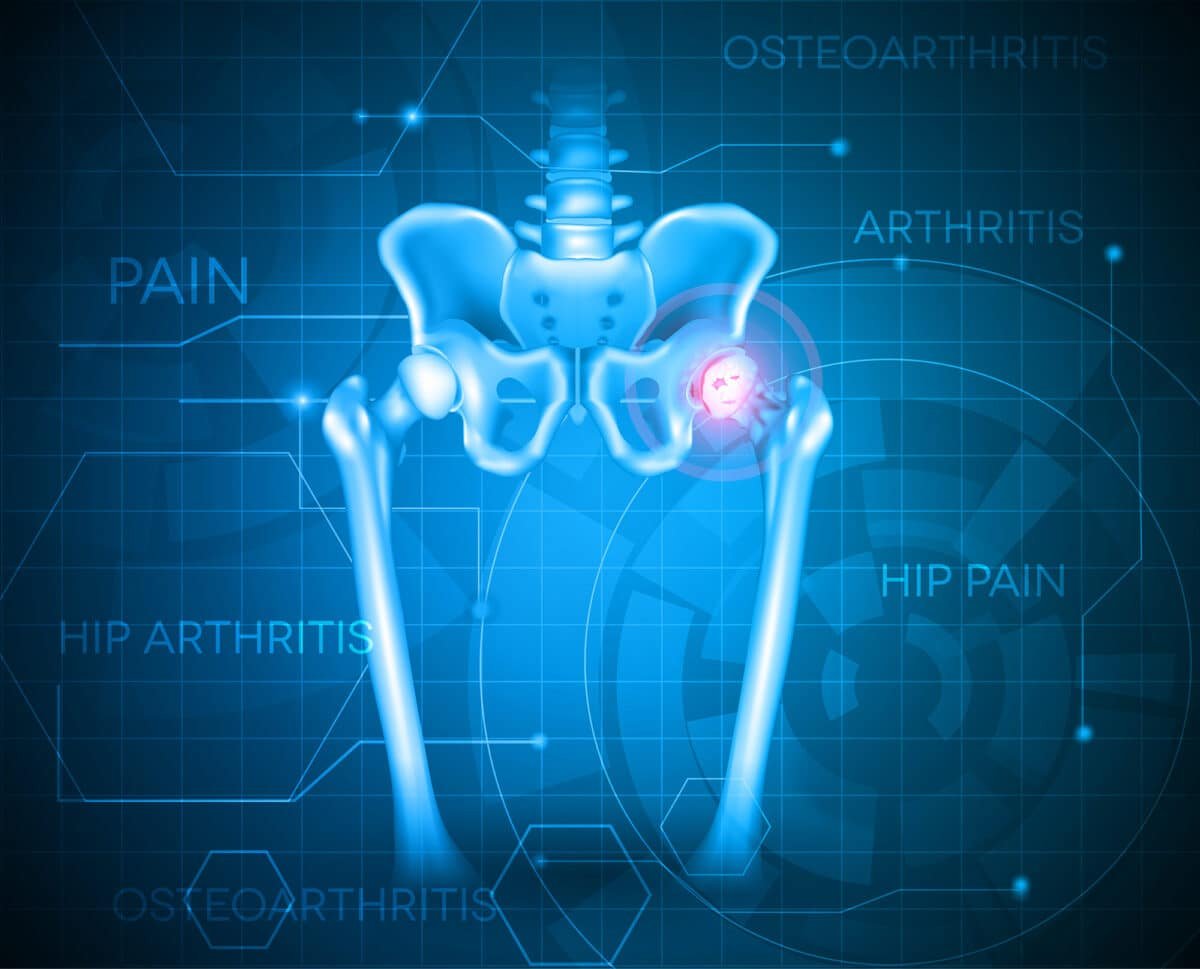HIP ARTHRITIS
Cause of your hip pain.
Your joints are involved in almost every activity you do. Movements such as walking, bending and turning require the use of your hip and knee joints. When the hip becomes abnormal or injured, the resulting pain can severely limit your ability to move and work. A common cause of hip pain is osteoarthritis. Osteoarthritis is sometimes called degenerative arthritis because it is a “wear and tear” condition that causes cartilage and bone to break down. With osteoarthritis, the protective cartilage at the end of the femur can be worn away, making walking painful as the bones rub together.
What is Hip Arthroplasty Surgery?
Total hip arthroplasty (THA) surgery involves removing the arthritic bone and damaged cartilage, and replacing them with hip implants designed to replace the hip joint. During surgery, the end of the thigh bone (femoral head) is replaced by a metal stem and an artificial head that is securely attached to the top of the stem. A metal cup lined with durable plastic (polyethylene) is applied to the socket of the hip (acetabulum).
Symptoms

The most common symptom of hip osteoarthritis is pain. This hip pain develops slowly and worsens over time, although sudden onset is also possible. Pain and stiffness may be worse in the morning or after resting for a while. Over time, painful symptoms may occur more frequently. Additional symptoms may include:
- Pain that occurs with vigorous activity
- Stiffness in the hip joint that makes walking or bending difficult
- “Locking” or “sticking” of the joint and a cracking noise during movement caused by loose fragments of cartilage and other tissue interfering with the smooth movement of the hip
- Decreased range of motion in the hip affecting walking ability
- Increased joint pain in rainy weather
Prevention
Hip arthritis, characterized by inflammation and degeneration of the hip joint, can significantly affect mobility and daily activities. While some risk factors for arthritis are beyond one’s control, taking preventative measures can help reduce the risk of developing hip arthritis:
- Maintain a healthy weight: Excess body weight puts extra stress on the hip joints. Maintaining a healthy weight through a balanced diet and regular exercise can reduce the risk of arthritis and relieve pressure on the hips.
- Regular exercise: Engage in activities that promote flexibility and joint strength. Low-intensity exercise such as swimming, cycling and walking is beneficial for maintaining joint function and reducing the risk of hip arthritis.
- Joint-friendly exercises: Incorporate exercises that specifically target hip strength and flexibility, such as hip stretches and strengthening exercises. This can help support the hip joint and prevent stiffness.
- Correct posture: Maintain good posture, especially when lifting heavy objects or performing repetitive tasks. This reduces unnecessary strain on the hips.
Avoid overuse: Watch out for overuse of your hips, especially in activities that involve repetitive motion. Give your joints adequate rest and vary your activities to prevent excessive stress on the hips.
Treatment
If hip arthritis has already developed, various treatment options aim to relieve pain, improve joint function and improve overall quality of life. Here are the key components of hip arthritis treatment:
- Physical therapy: A customized exercise program designed by a physical therapist can help strengthen the muscles around the hip, improve joint flexibility, and improve overall mobility.
- Lifestyle modifications: Adopting a hip-friendly lifestyle, including weight management, low-impact exercises, and use of assistive devices, can contribute to better hip health.
- Joint injections: In some cases, injections of hyaluronic acid or corticosteroids may be considered to provide temporary relief and reduce inflammation.
- Surgery: In advanced cases, surgeries such as hip arthroscopy, joint-sparing procedures, or hip replacement may be recommended to treat severe pain and joint damage.
- Assistive devices: Using assistive devices such as walking sticks can help reduce joint stress and improve mobility.
Individualized treatment plans, often involving a combination of these approaches, are tailored to each individual’s specific needs and the severity of hip arthritis.
Examination
During your appointment, the doctor will talk with you about your symptoms and medical history, perform a physical exam, and possibly order diagnostic tests, such as X-rays.
Physical examination
During the physical exam, your doctor will look for:
- Tenderness around the hip
- Passive and active range of motion
- Pain when pressure is applied to the hip
- Problems with your gait (the way you walk)
- Any signs of injury to the muscles, tendons and ligaments surrounding the hip
Visual tests
- Radiographs. X-rays provide detailed images of dense structures such as bones. X-rays of an arthritic hip may show narrowing of the joint space and changes in the bone.
- Other imaging tests. Occasionally, a magnetic resonance imaging (MRI) or computed tomography (CT) scan may be needed to better determine the condition of the bones and soft tissues of your hip.
- Category
- ΠΑΘΗΣΕΙΣ ΕΝΗΛΙΚΩΝ

